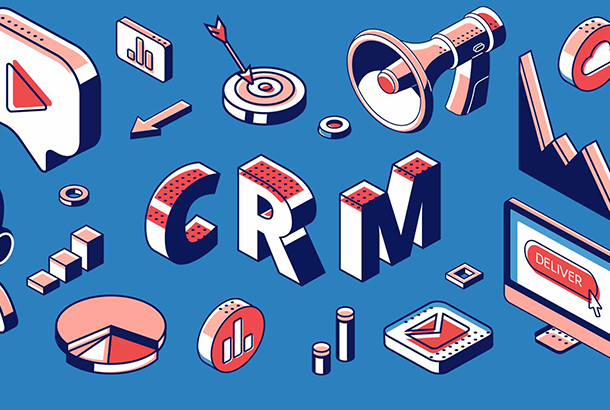Without question, turning to data to help develop and maintain businesses is vital.
Intelligent data is the lifeline and facilitator of success, whether it’s reacting to changing consumer behavior during and after the COVID-19 epidemic or making smarter business choices in marketing.
However, for several reasons, leveraging data remains challenging. These issues vary from data access and integration to technological proliferation and insufficient data collection methods. This is what the latest Salesforce marketing intelligence report shows.
The Marketing intelligence report: Data and Analytics Trends to Drive Future Growth is Salesforce’s latest release. This report based its findings on data from a double-blind online survey where over 1,050 marketing personnel across the world took part. Some of the critical questions that the study considered were;
- How are marketers putting growth requirements into action, increasing visibility into marketing ROI, and using data to support business goals?
- The most challenging aspects of integrating marketing data?
- What function does cross-channel marketing play?
The study has a wealth of helpful information for marketing teams, but three topics, in particular, are distinct in terms of what they imply for businesses in the future:
Planning, execution, and maintenance are all critical.
Marketers that are fully happy with their investments and results are 4.8 times more likely to be satisfied with data integration, according to Salesforce.
This planning component has always been important, but it is much more so today, given the rapid digital changes that most companies have seen in the last 12-18 months.
Connecting marketing activities to business outcomes is critical.
To measure anything, teams must first have the appropriate data in the right location and linked in such a manner that you can obtain an accurate picture and result of all marketing efforts.
This argument emphasizes the necessity of obtaining a 360-degree picture of the client, which is usually via a customer data platform (CDP).
Collaboration with cross-functional stakeholders is critical.
Sharing and collaborating on data analysis, linking marketing efforts to business results (which goes far beyond system connections), and applying what you learned to plans are some of the top obstacles, according to Salesforce.
All of these issues revolve around cross-departmental collaboration. Customers don’t care whether data is held by various departments and utilized for multiple reasons; they want consistency no matter where, when, or why they engage with an organization.
Furthermore, the study also shows some critical insights into;
- Growth is a predetermined goal.
According to the study, two-thirds of marketers have aligned their objectives with leading growth, and 96% think marketing plays a crucial role in generating ROI and development for their companies.
This is it; the world is transitioning from simply being ‘chief marketing’ to ‘chief growth,’ pushing in ROI and company development”.
That’s a significant departure from what businesses have seen in the past.
It used to be all about getting your marketing message out there, on every channel, and in every location. Now it’s all about sending the appropriate signals to promote company growth.
- The need for analytics speed and intricacy of marketing reporting
One of the underlying truths is that consumer tastes are transient, and marketers must adapt to meet them. And without the appropriate systems, marketers have less access to real-time or cross-channel marketing performance data-not leaving out automated cross-channel reporting.
Marketers want more access to data and at a faster rate so they can make an informed choice. However, only a small percentage of marketers have access to real-time or timely data. Perhaps the reason for this is poor data integration.
- Data integration across many channels is a common problem.
Possibly due to the recent pandemic, just one-third of marketers in the Marketing Intelligence Report rate their company’s marketing data management and integration as “good.”
“What makes data integration such a problem? Not everyone utilizes the same platforms or a single stack to power their whole marketing strategy. For instance, Facebook, Instagram, TikTok, and other new social media platforms pop up often.
That generates more data, making it more challenging for marketers to regularly maintain a high level of data integration.
Looking at it on a broader scale
Integrations, planning, and maintenance can make or break a program. That is possibly one of the most vital lessons that many businesses have learned recently. More than ever after, many companies, particularly those in the consumer goods industry, completed digital transformations in months rather than years.
The next step in a future where most, if not all, activities are digital is to improve how systems are interconnected. Importantly, just because systems are linked digitally does not imply that they are efficient. Teams should keep track of efficiency and inefficiencies to improve the areas that matter most to their customers’ satisfaction.
Teams should assess where data is stored (distributed or centralized) and linked as part of this endeavor. It is also essential to link marketing efforts to business objectives as you build that framework. That is because linking marketing efforts to business results helps determine how much money you’re making. It also allows teams to make better choices about what they should do next.
To get to this stage, you must first map data points and their corresponding systems to see how they are related. Then it’s a matter of learning how to link data in the most efficient way possible to build a comprehensive picture of the client profile while avoiding any blind spots. Overall, a CDP is the most accurate method for businesses to link data to marketing efforts and specific consumers.
Data cleanliness is one of the most often asked topics questions in a team.
How can they keep data clean after it’s in the proper location? The answer is that data cleaning begins with the design and implementation of procedures that reduce manual, time-consuming tasks.
However, this isn’t enough. You should also examine existing practices regularly to discover inefficiencies and see whether they can be modified or replaced with newer, superior ones. It should be a continuous endeavor since previously efficient methods may soon become inefficient in today’s fast-paced world.


